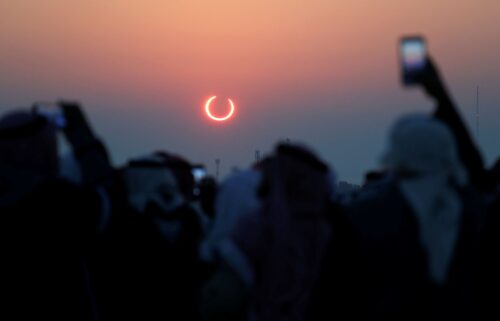Voyager 2 shuts down science experiment as power stores dwindle
By Jackie Wattles, CNN
(CNN) — The NASA team overseeing the iconic Voyager 2 spacecraft made the decision to power down one of its science instruments in an effort to conserve energy. The probe is currently soaring through space some 13 billion miles (20.9 billion kilometers) from Earth.
Mission engineers sent a command to shutter the Voyager 2’s Plasma Science, or PLS, experiment — which was used to observe solar winds — on September 26 using the Deep Space Network, a series of massive radio antennae that can beam information billions of miles through space.
It took 19 hours for the message to reach Voyager 2, and a return signal was received 19 hours later, NASA said Tuesday.
Despite the aging probe’s emptying power stores, NASA expects that Voyager 2 will keep operating with at least one science instrument into the 2030s.
The US space agency has routinely had to carry out commands to shut off various science instruments over the years as the 47-year-old spacecraft drains its supply of plutonium. Voyager 2 has three radioisotope thermoelectric generators that power the spacecraft by converting heat emitted by the decaying plutonium into electricity.
But turning off a piece of equipment on Voyager 2 or Voyager 1 — an identical spacecraft launched 16 days after its twin — is not ideal, NASA noted.
“Mission engineers have taken steps to avoid turning off a science instrument for as long as possible because the science data collected by the twin Voyager probes is unique,” the space agency said in a statement. “No other human-made spacecraft has operated in interstellar space, the region outside the heliosphere.”
The plasma experiment consisted of a set of four “cups,” or plasma detectors, which can gather information about the stream of ions and electrons spewed from the sun across the solar system, otherwise called solar winds. Solar wind flows from the corona, or the sun’s hot outer atmosphere, interacting with the planets and the interstellar medium.
Such readings helped NASA determine that Voyager 2 had left the heliosphere — or the area around our sun filled with solar wind and containing the sun’s magnetic field — in 2018, according to the space agency.
After reaching beyond the heliosphere, or interstellar space, Voyager 2 has “collected limited data in recent years due to its orientation relative to the direction that plasma is flowing,” NASA said.
The-CNN-Wire
™ & © 2024 Cable News Network, Inc., a Warner Bros. Discovery Company. All rights reserved.

